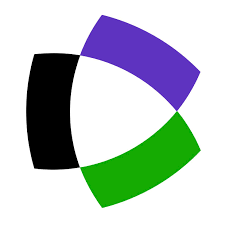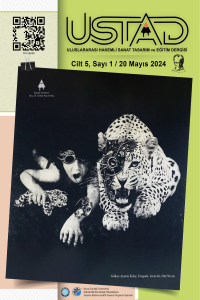Research Articles
Issue Reviewers

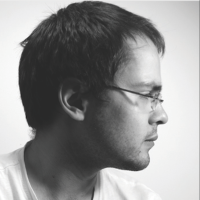
1983 Bursa doğumludur. Özel İnal Ertekin İlkokulu ve Bursa Gazi Anadolu Lisesi mezunudur. Uludağ Üniversitesi Eğitim Fakültesi Güzel Sanatlar Eğitimi Bölümü Resim İş Öğretmenliği Anabilim Dalı’nda lisans, Uludağ Üniversitesi Sosyal Bilimler Enstitüsü Resim Anasanat Dalı’nda yüksek lisans ve Sakarya Üniversitesi Sosyal Bilimler Enstitüsü Resim Anasanat Dalı’nda sanatta yeterlik eğitimini tamamlamıştır. 2008 yılından itibaren Uludağ Üniversitesi Güzel Sanatlar Fakültesi Resim Bölümü'nde görev yapmaktadır.
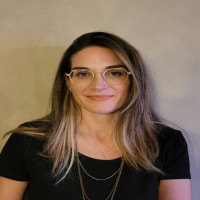
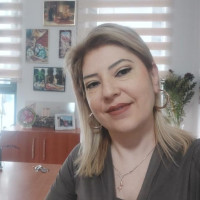



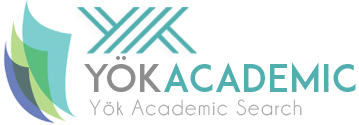
30 Kasım 1977 tarihinde Almanya’da doğdu. İlk ve orta öğrenimini Almanya’da, lise öğrenimini Çanakkale’de tamamladı. Çanakkale Onsekiz Mart Üniversitesi Eğitim Fakültesi Sosyal Alanlar Eğitimi Bölümü Türk Dili ve Ede¬biyatı Öğretmenliği Anabilim Dalından 2001 yılında mezun oldu. 2001 yılında Türk Dili ve Edebiyatı öğretmeni olarak Tekirdağ’ın Malkara ilçesine atandı. Aynı yıl, Çanakkale Onsekiz Mart Üniversitesi Sosyal Bilimler Enstitüsü Türkçe Eği¬timi Anabilim Dalında yüksek lisans öğrenimine başladı. Malkara’da 4 ay görev yaptıktan sonra Çanakkale Onsekiz Mart Üniversitesi Eğitim Fakültesi İlköğretim Bölümü Sınıf Öğretmenliği Anabilim Dalına Araştırma Görevlisi olarak atandı. Yüksek lisans öğrenimini 2003 yılında tamamladı. 2004 yılında Rektörlük Türk Dili okutmanlığına atanan Dr. Örge Yaşar, 2009 yılında Çanakkale Onsekiz Mart Üniversitesi Eğitim Bilimleri Enstitüsü Türkçe Eğitimi Anabilim Dalında doktora öğrenimine başladı. Doktora öğrenimini 2013 yılında tamamlayıp 2016 yılında Çanakkale Onsekiz Mart Üniversitesi Türkçe Eğitimi Anabilim Dalına öğretim üyesi olarak atandı. 2020 yılında Türkçe Eğitimi alanında Doçent unvanını aldı. Kendisi halen Doç. Dr. olarak Türkçe Eğitimi Anabilim Dalında görevine devam etmekte olup çalışmalarını Türkçe Öğretimi, Dil Bilimi ve Yabancı Dil Olarak Türkçe Öğretimi alanlarında sürdürmektedir. Çok iyi derecede Almanca, iyi derecede İngilizce bilen Dr. Örge Yaşar, evli ve iki çocuk annesidir.
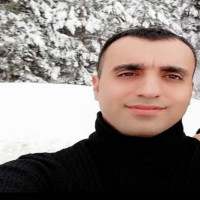
Associate Professor Murat Korucuk completed his PhD in Curriculum and Instruction at Atatürk University and received the title of associate professor in the related field in 2024. He currently works as an associate professor at Kafhas University Sarıkamış School of Physical Education and Sports. His research interests include the Flipped Learning Model, teacher education, learning theories and scale development. The author has published articles, papers presented at international meetings and book chapters. E-mail: muratkorucuk@hotmail.com
ORCID: https://orcid.org/0000-0001-5147-9865

Aim & Scope
USTAD has adopted the principles of researching and sustaining art and design, primarily in line with the principles and reforms of Mustafa Kemal Atatürk. For this reason, in line with the decisions taken by UNESCO in 2003 to adhere to the "Intangible Cultural Heritage" list, It is to follow the folklore, art, and cultural heritage studies in the world, to publish research on these subjects, and to carry the studies in this field to the international level.
For these purposes, USTAD publishes in Turkish and English.
Original research-based articles that will fill a gap in the field, Introduction, and criticism articles that will contribute to the development of the field, Translations, short reports, and information notes that will contribute theoretically and methodically to social culture, folklore, ethnology, anthropology, nature and ecology, visual arts, literature, sociology, psychology, marbling art, calligraphy, tile making and decorative arts, and cultural heritage studies. Report and short communications, Compilations from the field, or written sources.
Manuscripts to be published in USTAD must not have been published anywhere before, have not entered the refereeing process of other journals, or have not been rejected. Papers presented in a scientific meeting cannot be published in USTAD if the full text is published in the proceedings booklet.
A maximum of two (2) articles by an author can be published in the same year but not in the same number.
Author Guidelines
General rules:
Title: It should not exceed 12 words, should be written in bold and capital letters 14 Pt, and its second language equivalent initials should be capitalized just below the title; 12 Pt should be written in average thickness. If the article is in Turkish, the second language should be English, and if the article is in English, the second language should be Turkish. Turkish dialects written in Latin letters are evaluated. The second language of these articles should be Turkish.
Name of the Author: It should be written under the Title of the Article, the job title, Orcid, institution address, and e-mail information. It should be written 11 Pt in bold 12 pt under the English title.
Abstract: Must be at least 250 words. Sources, figures, charts, notes, etc., should not exist. At least three and seven keywords should be given just below the abstract. Abstracts and keywords should be prepared in Turkish and a second language. The questions that the reader needs to find answers to are listed below.
What are the study's aim, method, and most crucial finding or findings? (must be explained with at least 3, at most five sentences) In the introduction and the research aim, which question does the study seek to answer? Which research question(s) is it based on? Why is this study necessary? (Clear information should be given to the reader to create a clear idea) What gap does the study fill, and what contribution does it make to the field? (It should be explained clearly)
Which method was used in the study?
What are the findings and discussions?
What are the consequences? What is the recommendation of the article?
Article Text: Manuscripts should be written with 1 line spacing and 11 font size, not exceed 7000 words in English, and should be original. Manuscripts should be written in MS Word program and in Times New Roman font. The article should start with the introduction, the hypothesis of the article should be put forward, the development section (which can be supported by sub-headings and sub-headings) should consist of data, observations, opinions, comments, and discussions, and the conclusions should be explained with the support of suggestions.
The article should be in Turkish, and the abstract in a second language should be 3.5 cm on the left and 3.5 cm on the right. The text of the article should be adjusted so that the left and right margins are 2.5 cm.
Citation: Footnotes should never be used in citing references. According to this:
In the text (Surname, 2010:9),
If more than one author's work published in the same year is cited (Erdal, 2010a, Erdal, 2010b...)
In publications with two authors (Surname, Surname, 2015: 9),
In publications with more than two authors (Surname et al., 1995: 9),
(ty) in the sense of "no date" in publications with unknown dates, (Surname (ty)),
(I), (Surname, 2009: (sy)), meaning "no page" in publications whose pages are unknown.
If the author is unknown, the source is not shown,
If an oral source is used, the source person's information should include Name, Surname, Date, and Place of the Interview.
If the internet is cited, it should include the site name, author surname, and access date (ET); (Wikipedia, Surname, ET: 03.01.15).
Unpublished articles besides undergraduate, master's, and doctoral theses cannot be cited as references.
Bibliography: At the end of the text of the reference article, it should be written alphabetically according to the authors' surnames. If an author has more than one publication, it should be shown as (1980a, 1980b) if there are publications published in the same year by an author, according to the publication date.
According to this;
Books
Surname, A (Year of Publication). Title of Work. Publication Place (Province): XXX Bookstore.
Surname, A (2009). Effective Packaging Design. Bursa, Türkiye: Dora Publishing House.
Surname, A (2012). Educator İbrahim Alaaddin Gövsa, Shedding Light on the Future. Bursa: Ezgi Bookstore.
Other Publications
Works such as newspapers, magazines, encyclopedias, anthologies, novels, plays and films, story and poetry books, short stories, articles, book chapters, letters, conferences, speeches, conversations, and personal interviews, unpublished theses should be written in italics and double quotes as follows.
Surname, A (1997). “On Turkish Emblem Design”, Istanbul: Cumhuriyet Newspaper, no: 216164, p.2.
Surname, A (2011). "A revision of trepanations in Anatolia with new cases." NJ, England: International Journal of Osteoarchaeology, no: 21, Pp.505-534.
Resources with Incomplete Information:
If the source used does not specify the city where the work was published, Yyy (no place of publication) is used where this information should be in the imprint, yy (no publisher) if the place of publication is not specified, and ty (no date) is used if there is no information about the date of publication.
Surname, A (2012). Shooting Techniques in Stage Photography. Century: Ezgi Bookstore
Surname, A (2012). Shooting Techniques in Stage Photography. Bursa: century.
Surname, A (ty). Shooting Techniques in Stage Photography. Bursa: Ezgi Bookstore.
Multiple Authors:
The first author's surname is written first, followed by the first letter of the name, and the first letter of the name of all other authors is written, followed by the surname—Commas separate Authors.
For magazines:
Surname, A., A, Surname, A. Surname (2020). "Bursa Migrant Villages Photographs of Living Areas." International Journal of Art Design and Education, vol. DOI.
For Books:
Surname, A., A. Surname, A. Surname (2012). Shooting Techniques in Stage Photography. Bursa: Ezgi Bookstore. ISSN.
Texts in Electronic Media: For reference to texts in electronic media, those whose author, title, and publication date are indicated should be preferred for reliability. Imprint information follows in the following order: author, Last Name, First Name, and the text's title (in quotation marks and italics). Date of the source, if any; access date (ET); the site's address.
The example below should be followed.
Surname, A "On Typography." Yyy: 2002, ET, 07.01.2015, www.aed.org.tr.
Submission of Manuscripts: Manuscripts prepared by the above principles are uploaded to the journal's official website by the author. If necessary, according to the nature of the article, the similarity report and the author's copyright form must be uploaded together with the ethics committee report. Authors are required to use the Article Template.
Editorial Corrections: Minor minor corrections that are not essential during publication can be made by the editorial unit. These corrections are based on TDK Spelling Guide and Dictionaries.
Ethical Principles and Publication Policy
Publication Policy
General Principles: The International Journal of Art Design and Education (International Journal of Art Design and Education) started its publication in 2020, is published twice a year in spring and winter terms as of 2023. USTAD will be published online on 20 May / 20 December. All articles can be read online free of charge at https://uludag.edu.tr/ustad and http://sanatvetasarim.com. As of 2020, the entire archive can be accessed free of charge by the open access policy.
Each author, including editors, can publish at most one annual publication at USTAD. (except unique numbers)
USTAD does not charge the author for article publication or other expenses. USTAD, when it deems necessary, opens a particular issue for discussion in certain areas or aims to express its gratitude to respected scientists and artists who have had a say in their fields at home and abroad. The decision and authority in this matter belong to the scientific and editorial boards.
Open Access Policy: USTAD is a party to the Budapest Open Access Movement (BOAI). According to BOAI, Open Access is “peer-reviewed scientific literature, via the Internet; can be freely accessed, read, downloaded, copied, distributed, printed, scanned, linked to full texts, indexed, transferred as data to software and used for any legal purpose without financial, legal and technical barriers.
Price Policy
No fee is charged from the author for the articles to be published in the International Journal of Art, Design, and Education Index.

